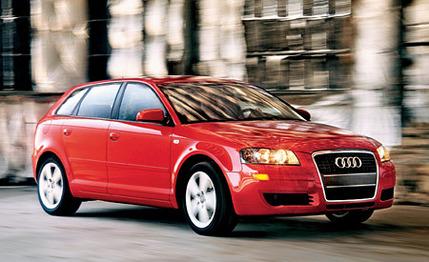 Road Test
Road Test
Well, here we go again. Another of the so-called premium German brands is dipping its toe into the $25,000 end of the car market. This time it's Audi, with the $25,460 A3.
We've seen this act before, and so far the results have been less than stellar. BMW's slow (0 to 60 mph in the mid-eights) but satisfying $23,870 BMW 318ti was discontinued in 1999. The $26,570 Mercedes C230 sport coupe will disappear as soon as dealer inventory runs out. Both of these cars had two doors and a sloping rear hatch-that's right, hatchbacks. When customers were asked why these affordable cars from the snooty brands failed to reach a wide audience, the common answer was: "Americans think hatchbacks are cheap economy cars."
Which is why the A3's hatchback-only body style came as a surprise. True, the A3 has an extra pair of doors that, combined with the nearly vertical rear hatch, make it look more like a mini-wagon than a hatchback. But is a mini-wagon better than a hatchback?
At least this wagon had the Audi style hounds drawing the skin. Coated in about the perfect shade of red, our A3 test car had that taut-skin look with a minimum of glitz. The only exterior chrome is a ring around the new schnoz, which is starting to look good to us.
The car appears tidy and compact because it is. The A3 shares a chassis with the VW Golf and is about 10 inches shorter than the A4 sedan. The A4 packages its engine front to rear, whereas the A3's powerplant sits crosswise, freeing up room in the passenger compartment. There are 49 cubic feet in front and 39 in the rear, which is about the same as in the A4. The cargo hold is tall but short and equals the 13-cubic-foot space of the A4's trunk.
Still, the A3 feels quite roomy. Two adults can fit comfortably in the back seats if the front passengers are shorter than six feet tall. The rear seat folds down without having to remove the headrests; once down, the A3 will accept a dorm room's worth of junk.
You can see where Audi tried to add some style to the dash with chrome trim rings and accents, but it's pretty much a sea of plastic. Even the steering wheel of our no-options test car was plastic. Rather than coming off as cheap, the plain dash looks neat and uncluttered. Audi uses the best plastics around. A leather-wrapped steering wheel is available, but it's bundled in either the $1800 Sport package (stiffer suspension, grippier tires, leather seats) or the $2025 Premium package (leather seats, chrome wheels, trip computer).
Opt for the Premium package, add in seat heaters ($700) and a navigation system ($1950), and you're at a heart-fluttering $30,135. A Mazda 3 five-door-loaded to the gills-runs $23,945.
Stuffed into the A3's engine room, however, is a sweetheart of a 197-hp turbocharged four that handily outpowers, for one, Mazda's 160-hp, 2.3-liter engine. The A3's mill displaces 2.0 liters and uses Audi's FSI system. FSI stands for "fuel stratified injection," which means that rather than spray fuel into the intake tract, like conventional port fuel injection does, this FSI motor squirts the gas straight into the combustion chamber. A major benefit of FSI is its ability to run lean air-to-fuel ratios, but there's a side effect of more NOX production. Unfortunately, the catalysts that can clean the extra NOX would be contaminated by the high sulfur content of U.S. fuels, so although A3s in Europe run lean, they don't in the States. The other benefit is better charge cooling, which allows the FSI engine to run a high compression ratio (10.3:1). The result is 197 horsepower at 5100 rpm and 207 pound-feet of torque at 1800 rpm.